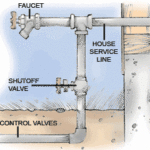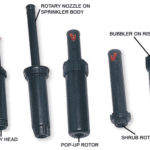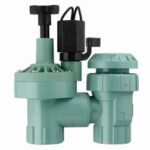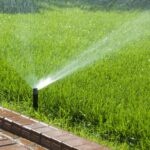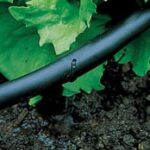There are three types of sprinkler heads to meet the needs of most landscaped areas: spray heads, rotors, and bubblers. To avoid over- or underwatering, use the same type of head throughout a circuit. Use sprinklers with a shorter spray radius in smaller areas and heads with a longer spray radius in larger areas.
Sprinkler Spray Heads
These are ideal for small lawns, shrubs, and oddly shaped beds because their fixed spray radius (usually between 5 and 15 feet) allows for targeted watering. A spray head has two main parts: the body and the nozzle.
For placement near shrubs, the head sits on top of a fixed riser; for high-traffic areas where the riser could be broken off, a pop-up head sits flush with the soil until the water comes on, rises during watering, and then retracts when the cycle is finished. Nozzles are attached to the body of the spray head, above the filter, and come in several patterns to direct spray in quarter, half, or full circles.
Spray heads throw more water in less time than do rotors, and they need lower water pressure—about 20 or 30 psi (pounds per square inch) compared to between 30 and 70 psi for rotors. High water pressure causes spray heads to mist, so you may have to install heads with built-in flow adjustment or use pressure reducers to keep them efficient.
Sprinkler Rotors
For large landscaped areas, rotors are the best option. They use higher water pressure to shoot streams of water much further than spray heads can—up to 50 feet.
Newer gear-driven rotors reduce the noise standard ones make, and closed cases seal out debris to make maintenance needs less frequent. Like spray heads, rotors can sit on fixed risers near shrubbery or pop up during use; they also come with different nozzles for different spray patterns.
Rotors are an especially good option for clay soil since they deliver water more slowly than do spray heads, thereby allowing for better drainage. While slower water delivery means you may have to run rotors longer than spray heads, their long reach means you’ll need fewer of them.
Bubblers
Ideal for small shrubs, trees, and planters, bubblers direct spray downward in areas up to 5 feet, making them ideal where you want to water roots without getting flowers or foliage wet.
Rotors or Fixed Heads?
After developing your garden plan, you’ll need to choose the right sprinkler head for each location. In most cases, the choice will come down to either a rotor or a fixed spray head.
First, measure your lawn. If, for example, your lawn is 30 feet wide, installing rotors that water that distance will be more efficient than installing double the number of spray heads that throw 15 feet. On the other hand, if your lawn is 10 feet wide, using rotors with a minimum radius of 15 feet will not only waste water but also do an inefficient job of watering the area.
If rotors are your best choice but you do not have enough water pressure, calculate the cost of installing a booster pump versus installing twice the amount of fixed spray heads.
More Considerations
Following are a few other considerations to keep in mind:
• For lawns and other high-traffic areas, install components with heads that pop up when watering and recede when the cycle is finished.
• If you live in a windy region, opt for spray heads that water low to the ground over rotors to reduce water loss.
• For slopes, install low-flow rotors at the top. If a slope is quite long, add another row or two of rotors, but put them on a shorter watering cycle because the water from the top will run downhill.
• A sprinkler head with a built-in check valve should be installed at the circuit’s lowest point to reduce drainage when the sprinklers go off.
• If your soil is heavy clay, select heads with low flow rates to prevent runoff and/or pooling.
• If your home water supply is hard water, choose sprinkler heads designed to resist clogging and check them regularly.
• If your water pressure is between 80 and 100 psi, use spray heads that temper the pressure to prevent misting and water dissipation.
• Make sure sprinkler heads are not blocked by plants, and adjust their rise as necessary as the plants grow.
• If you are concerned that a riser might be bumped, use one with a flexible nipple at the base to prevent it from breaking on impact.
• Mount pop-up heads on swing-joint risers so you can keep the sprinkler head level with the ground. Risers on swing joints are also better able to absorb an impact without breaking.



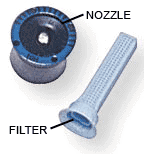
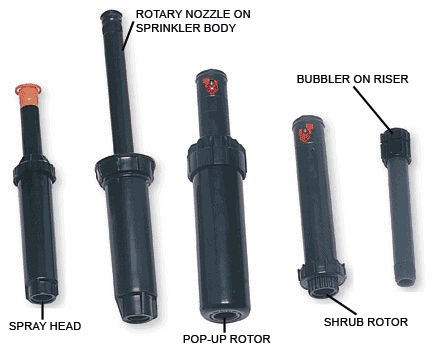
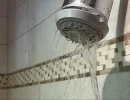
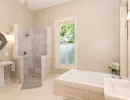
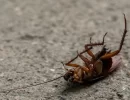
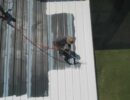
 Don Vandervort writes or edits every article at HomeTips. Don has:
Don Vandervort writes or edits every article at HomeTips. Don has:
